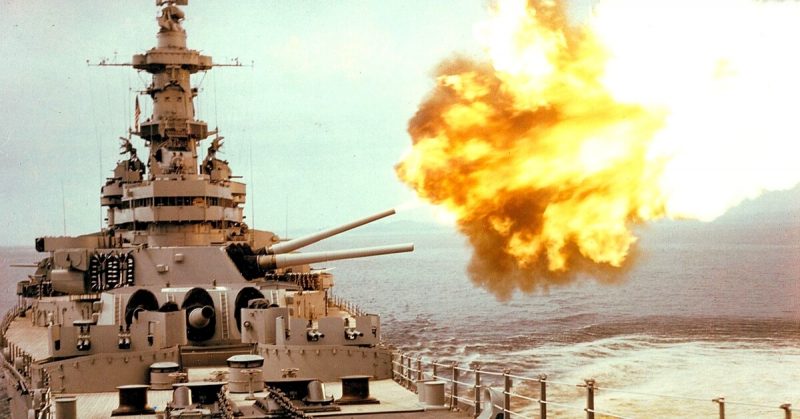From November 1943 until her bizarre loss in June 1945, the American destroyer William D. Porter was often met with the clever greeting: “Don’t shoot, we’re Republicans!” when she entered a port or joined other naval ships. The significance of this expression was a secret of the United States Navy until the story resurfaced and received extensive publicity following a reunion in 1958.
Half a century ago, the “Willie Dee,” as the William D. Porter was known, accidentally fired a live torpedo at the battleship Iowa during a practice exercise on November 14, 1943.
At the time, the Iowa was carrying President Franklin D. Roosevelt! Secretary of State Cordell Hull and all America’s World War II military brass were also on board. They were heading to the “big three” conferences in Cairo and Tehran.
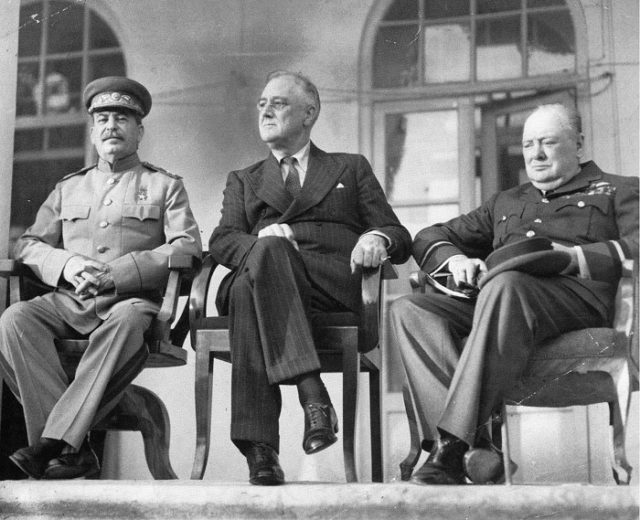
Roosevelt was to meet with Stalin from the Soviet Union and Churchill from Great Britain. Had the W.D. Porter successfully struck the Iowa, the last 50 years of world history might have been quite different. Fortunately, the W.D. Porter’s warning allowed the Iowa to evade the speeding torpedo, and historical events were not altered.
The USS William D. Porter (DD-579) was one of the hundreds of assembly-line destroyers built during the war. Although smaller than modern ships, they were powerful and menacing in their day. They had a main battery of five dual-purpose 5-inch, .38 caliber guns and an assortment of 20mm and 40mm AAA guns. However, their main armament consisted of 10 fast-running and accurate torpedoes that carried 500-pound warheads.
The W.D. Porter was commissioned on July 6, 1943, under the command of Lieutenant Commander Wilfred A. Walter. He had been fast-tracked through the Navy’s ranks. In the months before accompanying the Iowa across the Atlantic in November 1943, the W.D. Porter‘s crew members learned their trades.
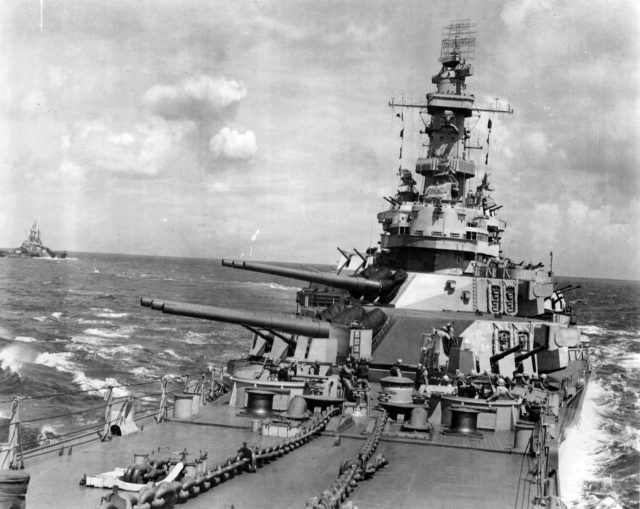
The mishaps began with the order to join the escort to North Africa with the pride of the fleet, the big new battleship Iowa.
The night before leaving Norfolk, Virginia; the W.D. Porter almost demolished a nearby sister ship. She backed down along the other ship’s side and, with her anchor, tore down railings, a life raft, the captain’s gig and various other pieces of equipment. The Willie Dee sustained a slightly scratched anchor, but her career of mayhem and destruction had begun.
The next event occurred just 24 hours later. The four-ship convoy consisted of the Iowa and her secret passengers, the W.D. Porter and two other destroyers. They were under strict instructions to maintain complete radio silence as they were going through U-boat waters where speed and silence were the best defenses.
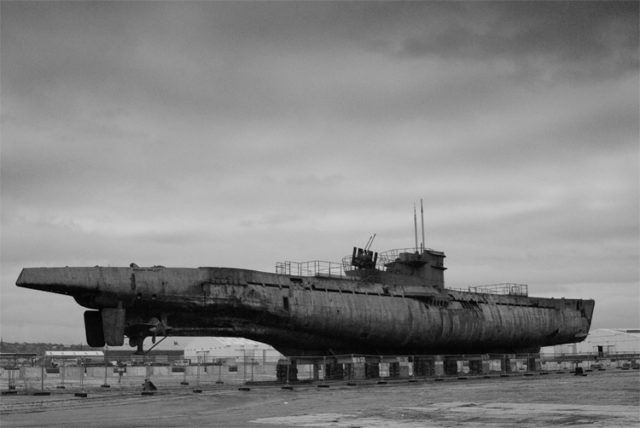
Suddenly, a tremendous explosion rocked the convoy, and all the ships immediately commenced anti-submarine maneuvers. These tactics continued until the W.D. Porter sheepishly admitted that one of her depth charges had fallen off the stern and detonated in the rough sea. The safety instructions had not been carried out as required. Captain Walker’s fast-track career was quickly becoming apparent.
Shortly after that, a freak wave inundated the W.D. Porter, stripping everything that was not lashed down and washing a man overboard who was never found.
Then, the engine room lost power in one of its boilers. During all these events Captain Walker had to make reports almost hourly to the Iowa on the Willie Dee’s difficulties. At this point, it would have been a good idea to send the hard luck ship back to Norfolk.
The morning of November 14, 1943, dawned with a moderate sea and pleasant weather. The Iowa and her escorts were just east of Bermuda when the President and his fellow passengers wanted to see how the ship could defend herself against an air attack. The Iowa launched some weather balloons to use as anti-aircraft targets. More than 100 guns took part in the exercise, and the President was duly proud of his Navy.
Just as proud was Chief of Naval Operations, Admiral Ernest J. King, a large man both in size and demeanor. Disagreeing with him meant the end of a Naval Career. Up to this time, no one knew what firing a torpedo at him would mean!
Over on the Willie Dee, Captain Walter watched the fireworks display with admiration and envy. Thinking about redeeming his career and breaking the hard luck spell, the Captain sent his crew to battle stations. They shot down the balloons missed by the Iowa, which had drifted into the W.D. Porter‘s vicinity.
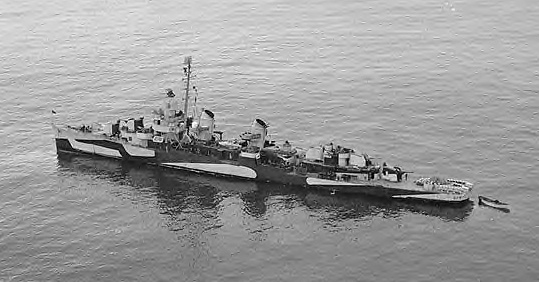
Down on the torpedo mounts, the W.D. Porter‘s crew watched, waited and prepared to take practice shots at the big battleship, which, even at 6000 yards seemed to blot out the horizon.
Torpedo men Lawton Dawson and Tony Fazio were among those responsible for the torpedoes. One of their duties was to ensure the primers (small explosive charges) were installed during actual combat and removed during practice. Dawson, unfortunately, failed to remove the primer from torpedo tube number three.
Up on the bridge, a torpedo officer ordered the simulated firing to commence. When torpedo three was fired there was the unmistakable sound made by a successfully armed and launched torpedo!
Lieutenant H. Seward Lewis, witnessed the entire event. Just after he saw the torpedo hit the water on its way to the Iowa, he asked Captain Walter “Did you give permission to fire a torpedo?”
The next five minutes aboard the Willie Dee were pandemonium. Everyone raced around shouting conflicting instructions attempting to warn the Iowa of the imminent danger. First, a flashing light tried a warning but indicated the wrong direction. Then, the W.D Porter signaled she was going in reverse at full speed.
Despite the strictly enforced radio silence, it was decided to call the Iowa. The radio operator yelled down the line, but the Iowa operator was more concerned about proper procedure and requested the offending station identify itself first. Finally, the Iowa began turning to avoid the speeding torpedo.
Word of the accidental torpedo firing reached President Roosevelt. He wanted to see it and asked for his wheelchair to be moved closer to the railing. His loyal Secret Service bodyguard immediately drew his pistol as if to shoot the torpedo!
The Iowa began evasive maneuvers but trained all its guns on the William D. Porter. There was some thought the W.D. Porter was somehow part of an assassination plot.
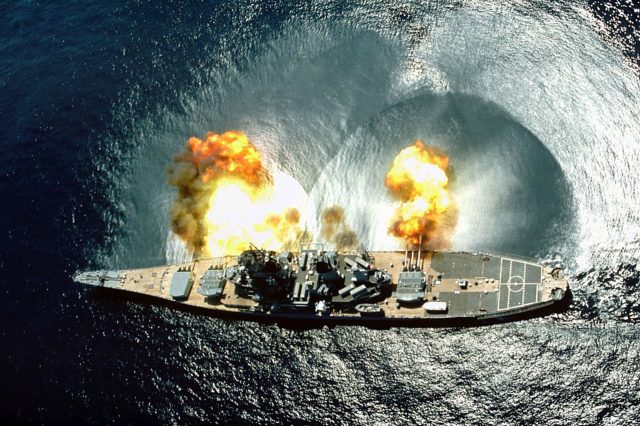
Within moments of the warning, a thunderous explosion occurred behind the Iowa. The torpedo had been detonated by the wash kicked up by the battleship’s increased speed.
The crisis was over, and so were some careers. Captain Walter’s final utterance to the Iowa was in response to a question about the origin of the torpedo. His answer was a weak, “We did it.”
Shortly after, the new state-of-the-art destroyer, her ambitious Captain and seemingly bumbling crew were placed under arrest and sent to Bermuda for trial. It was the first time in the history of the United States Navy an entire ship and her company had been arrested. The William D. Porter was surrounded by Marines when it docked in Bermuda and was held there for several days as the closed session inquiry attempted to find out what had happened.
The outcome was delayed until Dawson confessed he had inadvertently left the primer in the torpedo tube, which had caused the launch. After the torpedo had launched, Dawson had thrown the primer over the side to conceal his mistake. The incidents were chalked up as an incredible set of circumstances and placed under a cloak of secrecy.
Captain Walter and several former William D. Porter officers and sailors found themselves in obscure shore assignments, and Dawson was sentenced to 14 years of hard labor. President Roosevelt intervened, however, and asked that no punishment be given as the near disaster had been an accident.
The destroyer next found herself in the upper Aleutians, Alaska, on patrol. It was probably thought as safe a place as any for the destroyer and those around her. However, before being reassigned to the Pacific, she accidentally, but of course successfully, lobbed a 5-inch shell into the front yard of the American base commandant.
When the William D. Porter later joined other ships off Okinawa, the destroyer did distinguish herself by shooting down a variety of Japanese aircraft – and, reportedly, three American planes!
She was usually greeted by, “Don’t shoot, we’re Republicans” and the crew of the Willie Dee became used to the ribbing. However, the crew members of a sister ship, the USS Luce, were not so polite in their greetings after the W.D. Porter accidentally riddled her side and superstructure with gunfire.
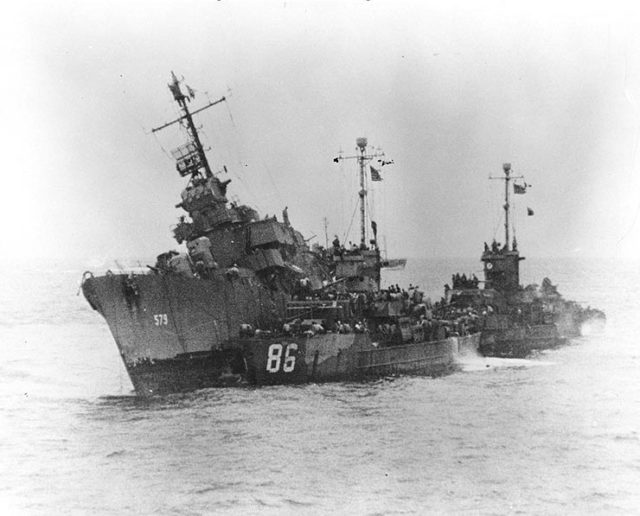
On June 10, 1945, the hard luck ship met her end. A Japanese “Val” bomber constructed almost entirely of wood and canvas slipped through the defenses. As the bomber had little metal surface, it was not unlike our present-day stealth planes and did not register on the radar.
The fully loaded kamikaze bomber was headed for a ship near the W.D. Porter but, at the last moment, veered away and crashed into the sea alongside the unlucky destroyer. There was a sigh of relief as the plane sank out of sight. Unfortunately, it then blew up underneath the destroyer tearing open the ship’s hull.
Three hours later, the last man, the captain, jumped to the safety of a rescue vessel. They were leaving the ship that almost changed the face of the world and national politics to slip stern first into 2,400 feet of water. Miraculously, not a single soul was lost in this sinking. It was almost as if the ship that had been so unlucky chose to let her crew live. The saga of the USS William D. Porter was over.
Every so often, the crew of the Willie Dee gather and remember their ill-fated ship. They remember the good times, and now, nearly 73 years later, the notorious torpedo incident elicits amusement rather than the heart-wrenching embarrassment it caused in 1943.
